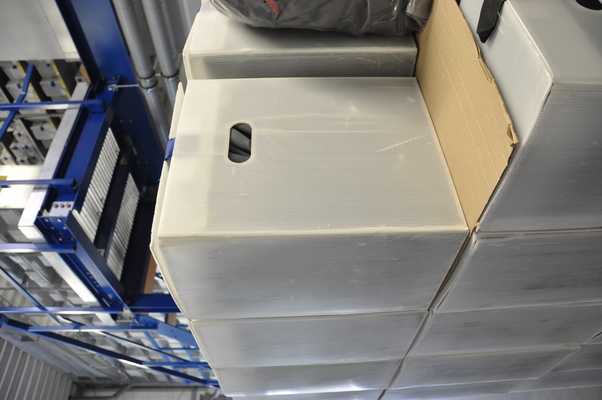HB Protective Wear is a company that has 180 employees at their site in Thalhausen, Westerwald, in Germany and is a leading producer of personal protective wear. To guarantee their customers‘ safety, protective wear has to be produced using artificial fibres, that is PLASTIC!
What's the difference? "Workwear" vs. "PSA"
The type of protective clothing produced at HB is for quite different areas of work - it is designed for work that is highly dangerous without the proper equipment and clothing. We learned a lot about the usage of plastics that are essential for the protective features in these clothes.
In general there are two types of work wear. Work wear without additional means of protection, such as multifunctional trousers that offer a variety of pockets or high-visibility materials, and protective work wear that itself is dividable into three subcategories. The company itself focuses on the production of “category 3” protective wear that is used to protect users from deadly dangers or irreversible injuries. Examples include steel mills, ice-houses and the chemical industry. HB-Protective Wear is the European leader in terms of category 3 certified clothing.
One essential material needs to be included in all of them: plastic. Without plastic the safety of workers is not guaranteed. For example, cotton shirts are highly flammable and could not be used while working in hot environments like steel mills. They would instantly catch fire and the worker wearing them would be in risk of death or serious injuries. Here the protective wear consists of synthetical fibers like “aramid” that causes flames to extinguish themselves on contact. The fibers used in clothing are adapted to fit the needs of customers and workers. Street workers, for example, need special high visibility work wear in specific colors like a bright orange that can only be produced with plastic-based fibres.
Plastic packaging and logistics
As mentioned above, to guarantee their customers‘ safety, HB Protective Wear can't do without artificial fibres - that is PLASTIC - in their products. Nevertheless, the company is active in environmental protection and tries to work as sustainably as possible.
Newly delivered products, also called ingredients, are packed in plastic and cardboard boxes. HB stores the products in reusable plastic boxes so they don´t have to use new plastic packaging. The boxes have a life span of four years and are – when broken – recycled and made into new boxes. Transportation to and from the production sites in other countries is also done in these boxes.

During the last step of transporting the final product to the customers, plastic packaging like foil or plastic bags can hardly be avoided, partly because there are no alternatives so far (e.g. paper can tear easily and is prone to mold) but also because a lot of customers insist on plastic packaging (e.g. because they have to store the products). According to a survey carried out by trainees, 32% of customers are ready to dispense plastic, 28% are unsure but the majority of 40% insist on plastic packaging. The trainees at HB work on the topic of sustainability to develop an innovative project for the future of the company. The project is about replacing plastic used for transport with cotton bags which are sewn from fabric that is left over from the production of protective wear. There are no additional costs since the sewing is done by underutilized production sites.
It is amazing to see that despite the necessity for plastic in their products, the company makes sure to act sustainably and environmentally friendly.
Fibres and your ecological footprint
Asking yourself the question, “How can I reduce my personal ecological impact in the context of the micro plastic pollution?” it could be a promising point to pay attention to the clothing you purchase.
In general, you can distinguish between fibres from natural sources and chemical ones. Natural sources for fibres are for example those from plants, animals and out of minerals, like flax, wool, silk and asbestos. Chemical fibres are natural polymers (e.g. viscose made from cellulose), synthetic fibres (e.g. polyester) and inorganic fibres (e.g. carbon).
At first sight, fibres from natural sources seem to be an appropriate and affordable substitute for chemical ones, but apart from their ecological impact due to the huge water consumption and the related greenhouse gas emissions, they are not able to fulfil the same tasks as their chemical relatives. As the employees of HB Protective Wear told us, especially in case of protective wear, e.g. for firefighters and people who are handling dangerous substances, it is less important to avoid plastic waste than to rescue lives. In addition to that, many companies order specifically coloured clothing for example in orange, which requires synthetic fibres, while the same clothing in yellow would be feasible with fibres from natural sources with a lower ecological impact.
Consequently, it would be inappropriate to only criticize the companies who use plastic for their products. It is also important to observe your own consumption and to consider how much and what you purchase and probably do some research about the product and possible alternatives. The companies will be much more open for requests and suggestions than you might think.